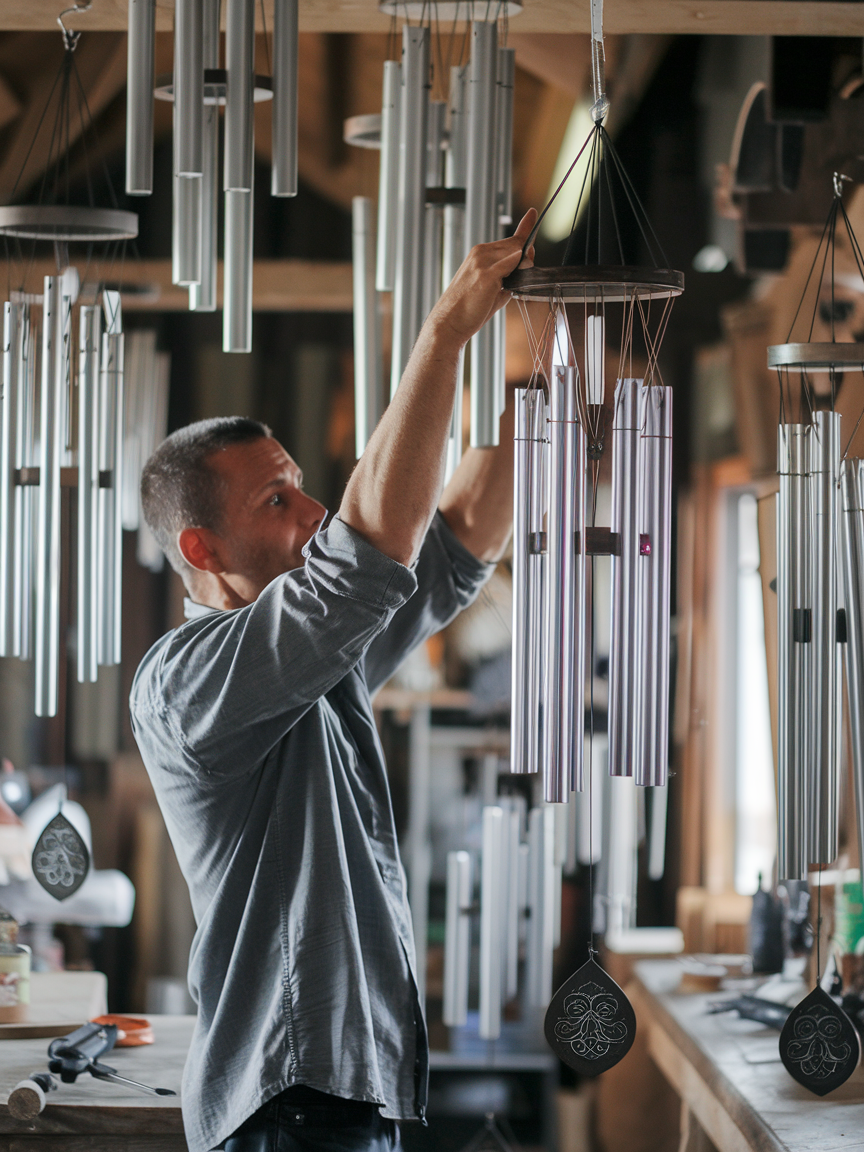Wind chimes may feel like a modern backyard accent, yet their roots stretch back more than 3,000 years. Across cultures—and eventually across continents—people discovered that a gentle ring in the breeze could soothe spirits, mark sacred spaces, and keep memories alive. This article traces that journey and explains why a set of tuned tubes remains one of the world’s most comforting memorial gifts.
1. Bronze Bells of Ancient China (c. 1100 BCE)
Archaeologists have uncovered bronze “fengling” bells in Zhou‑dynasty temples. Hung from eaves, their purpose was twofold:
-
Ward off bad luck—The ringing was believed to scatter malevolent spirits.
-
Invite blessings—A pleasing tone signaled harmony between heaven and earth.
Fun fact: Early fengling were cast in pentatonic scales—the same five‑note pattern used in many lullabies today.
2. Buddhist Monasteries in Japan (6th–8th Century)
As Buddhism spread east, so did the bell tradition. Monks introduced lightweight metal “furin” chimes:
-
Summer coolness ritual—In humid months, the crisp ding created a psychological sense of cooler air.
-
Acts of remembrance—Strolling through temple gardens, devotees rang the chimes to honor ancestors.
Today, many Japanese families still write a loved one’s name on the paper tag beneath a furin.
3. Sailors, Sea‑Glass & the Victorian Era
Trade routes brought Asian chimes to Europe by the 18th century. But it was coastal sailors who popularized them:
-
Sea‑glass and shells were strung together as keepsakes from long voyages.
-
Widows later hung the tinkling strands at cottage doors—each breeze a reminder of husbands at sea.
By the late 1800s, English foundries were producing tuned brass garden chimes for mourning households.
4. The American “Sound Therapy” Movement (1960s–80s)
Modern tuning techniques (aluminum + mathematical frequency tables) allowed chimes to shift from decoration to intentional sound instrument.
-
New‑Age practitioners promoted 432 Hz and 528 Hz tones for relaxation.
-
Hospice programs began gifting small chimes to grieving families as part of bereavement care.
These developments paved the way for today’s personalization boom.
5. Symbolic Meanings You’ll Hear in Every Ring
| Symbol | Cultural Origin | What It Conveys Today |
|---|---|---|
| Peace & Protection | East Asian temples | A safe, serene home atmosphere |
| Guiding Spirit | Shinto ancestor rites | Loved one “speaks” through the wind |
| Cycle of Life | Victorian mourning gardens | Ongoing connection, not an ending |
| Healing Frequency | New‑Age sound therapy | Emotional balance, calm heartbeat |
6. Material Matters: Why Aluminum Took Over
-
Precise pitch—CNC‑cut tubes allow ±5 cent tuning.
-
Weather resistance—Powder‑coated aluminum resists rust far longer than brass or bamboo.
-
Engraving ease—Laser etchers create permanent memorial text without weakening the tube walls.
(See how we apply these benefits in our Ultimate Guide to Personalized Memorial Wind Chimes.)
7. How Modern Families Use Memorial Chimes
-
Funeral décor—Placed near a photo collage; taken home afterward.
-
First‑year milestones—Rung on birthdays or holidays to mark presence.
-
Garden sanctuaries—Paired with a favorite flower bush or bench.
-
Pet memorials—Small, paw‑print charms added to shorter chimes.
8. Choosing a Chime That Honors Your Story
When selecting a memorial wind chime, think in layers:
-
Tone – Does a deep C note or bright E note evoke your loved one better?
-
Phrase – A favorite quote or lyric keeps their voice present.
-
Placement – Porch, tree branch, or graveside shepherd hook?
Need help deciding? Our step‑by‑step selector in the Ultimate Guide walks you through material, size, and engraving in under three minutes.
Closing Reflection
From temple bells to backyard porches, wind chimes have carried human grief—and hope—on every breeze. Each ring may last only a second, yet its echo links centuries of comfort.
If this history resonated with you, explore our personalized collection or share the article with someone searching for a gentle tribute.

